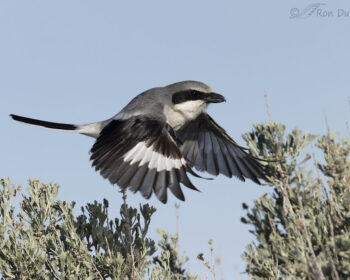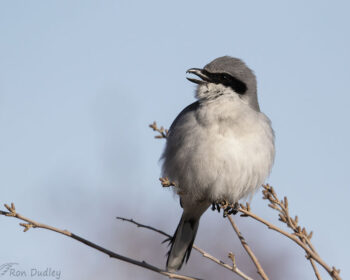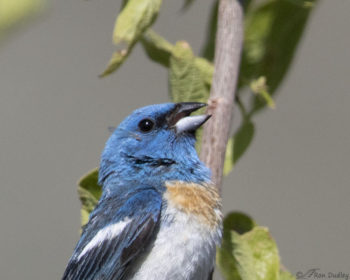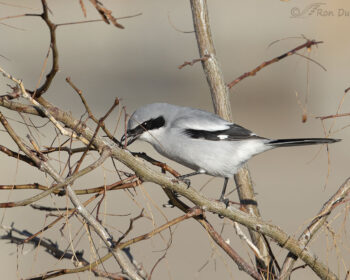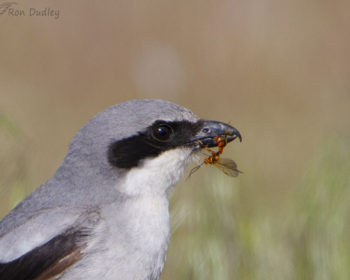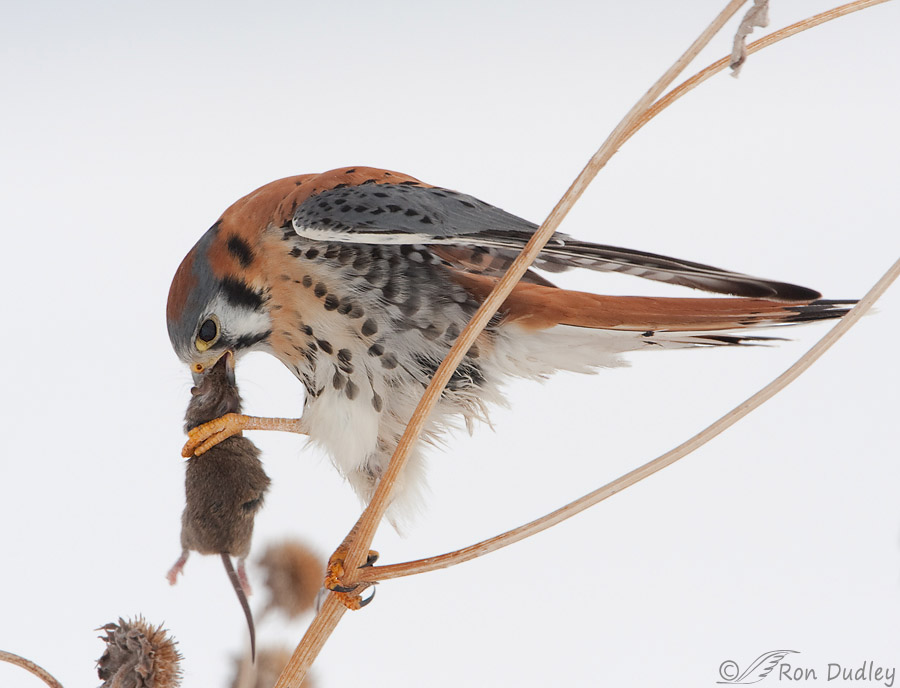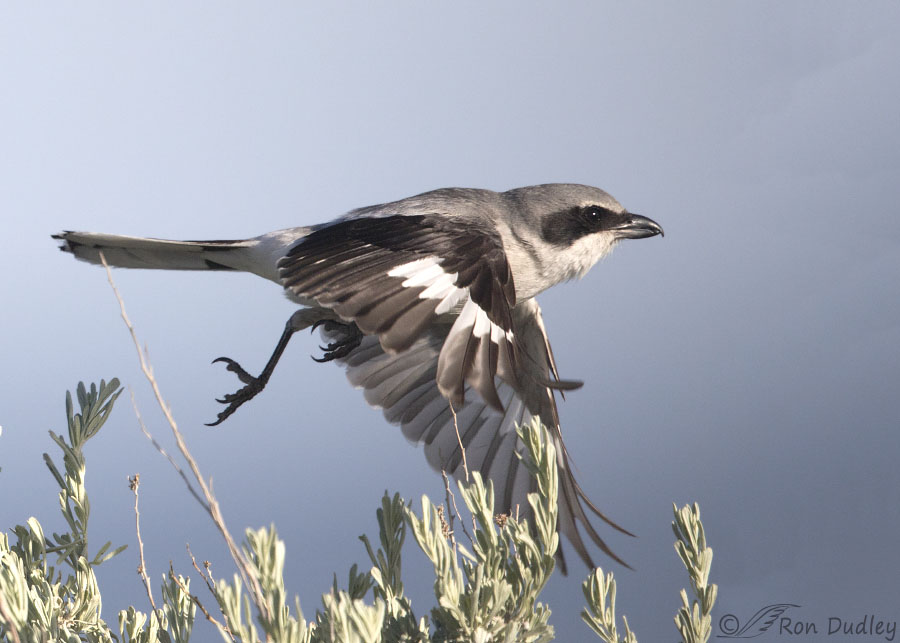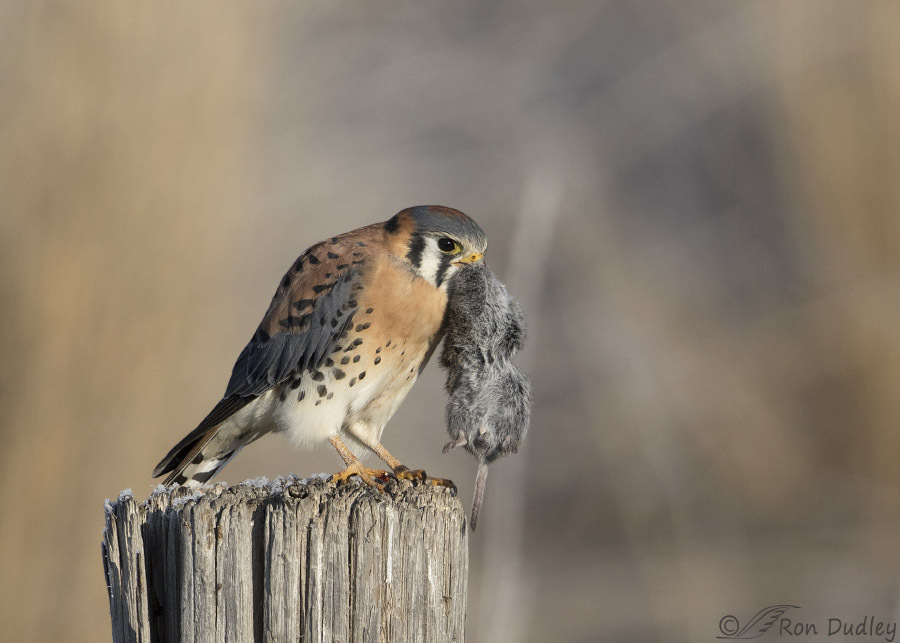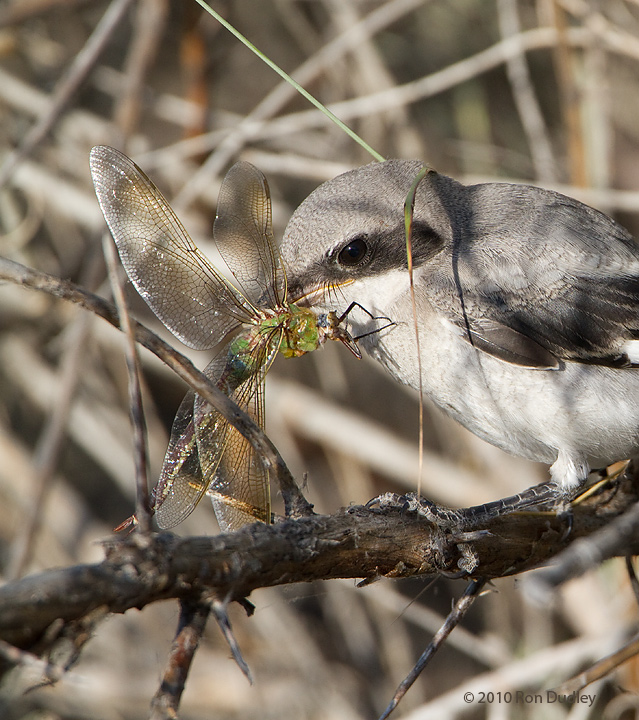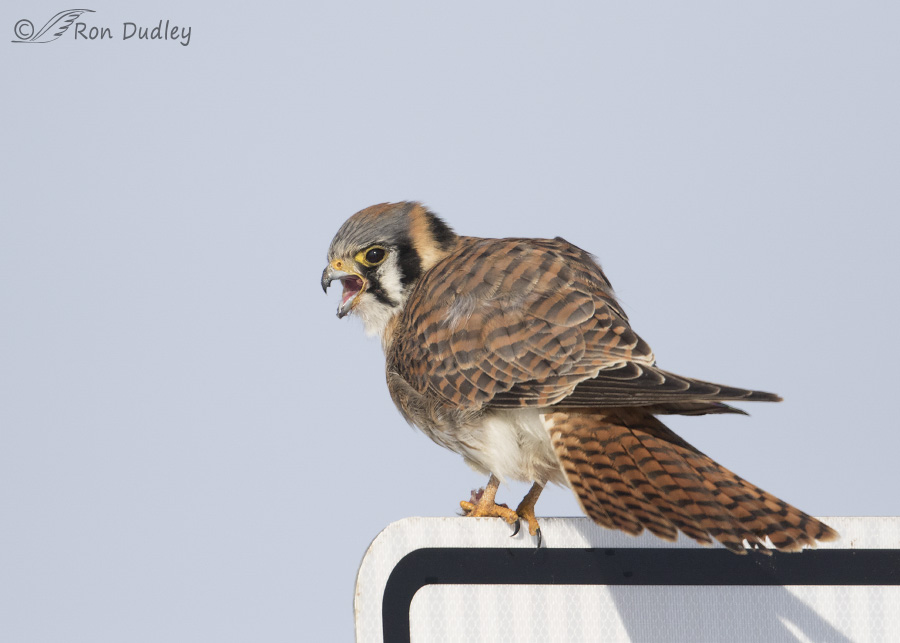Tag: falcon tooth
Yesterday’s Loggerhead Shrike In Bitter Cold Temperatures
A Question Of Avian Terminology
Loggerhead Shrike Attempt On Prey
Loggerhead Shrike With A Wasp
The Killing Bite Of The American Kestrel
Loggerhead Shrike With Prey And In Flight
American Kestrel With Vole Prey – The Rest Of The Story
Loggerhead Shrikes Impaling Prey
Female American Kestrel Feeding On A Vole
An Incredible Experience With A Prairie Falcon And A Hapless Duck
This morning on Antelope Island was a photographic bust – heavy snow coming down most of the time and no light to speak of. So finally, after several hours of hoping the clouds would clear, we put our tails between our legs and headed for home. Talk about perfect timing! We’d traversed about half the causeway when the clouds parted, light blossomed and a serendipitous adult Prairie Falcon appeared, hunting for ducks. The falcon ambushed this male Northern Shoveler just as I was getting my pickup in position, so I missed that shot but this one was taken within a second or two of the strike. The duck is bleeding heavily. It struggled for a minute or so, and then died in the water. After the attack, the falcon would perch along the causeway for a short period, then take off and fly over the duck. This was done repeatedly. With my 500mm plus tc I could never get both the duck and the falcon in the image – this is as close as I came. 1/1600, f/5.6, ISO 500, 500 f/4, 1.4 tc, natural light, not baited, set up or called in Here, the falcon is perched to watch the duck out on the water. 1/2500, f/5.6, ISO 500, 500 f/4, 1.4 tc, natural light, not baited, set up or called in I had a difficult time locking focus on the falcon as it buzzed the duck because the textured water background was so close to the bird. I kept getting sharp shots of…
American Kestrel – The Killing Bite
I have watched American Kestrels consume their prey up close many times. Usually that prey has been a vole but occasionally it’s been a small bird or mouse. But until this day the prey had always been already dead when I arrived on the scene. It was cold and snowy when I spotted this male kestrel with a mouse (I was surprised it wasn’t a vole) that was still very much alive. As a side note I want to add here that this kestrel was not baited. Many photographs are taken of raptors when they’ve been baited by mice (they can be bought at pet stores) that have been provided as an enticement by the photographer. That was not the case here – I do not bait. Male kestrel with live mouse It was obvious that the mouse was alive because it was struggling slightly, its tail was twitching and its eyes were open. In my experience these birds often prefer a more stable perch than this while they eat their meal – something like a fencepost or pole that provides some kind of platform from which to eat. So I didn’t think he would eat the mouse here and I was right. He gave me time for a few quick shots and then flew off to another perch. Kestrel on second perch He didn’t go far however and I was able to approach him again. This next perch was also precarious to eat from because the wind was blowing and both perch and bird were swaying in the breeze. …


